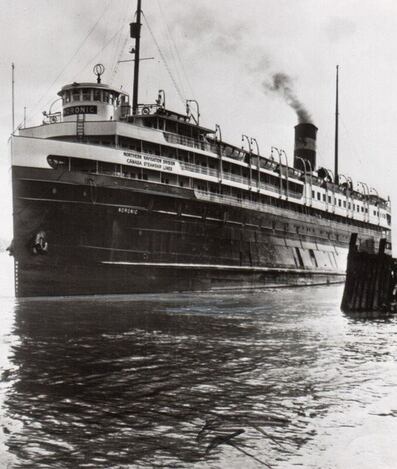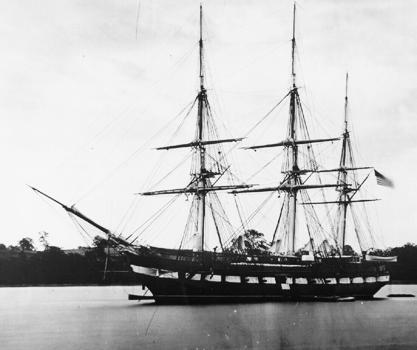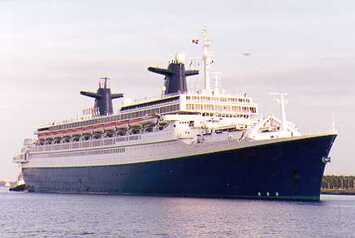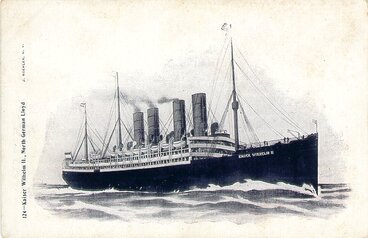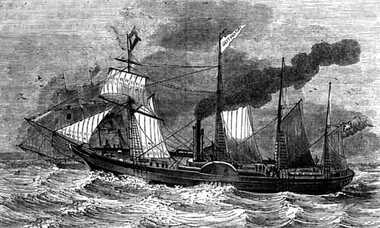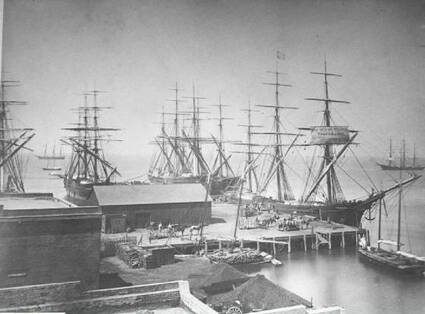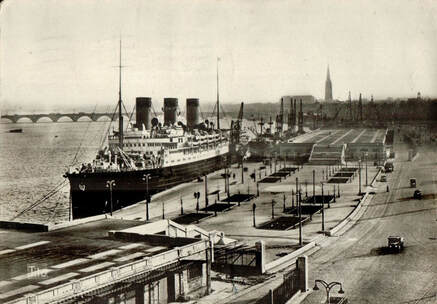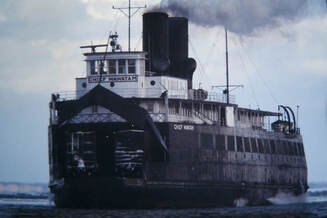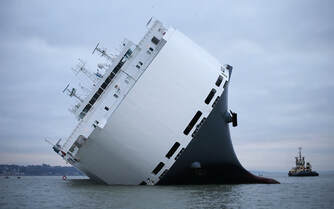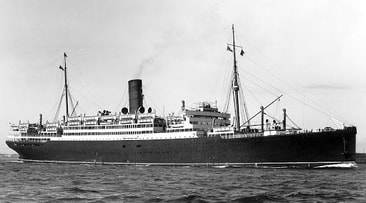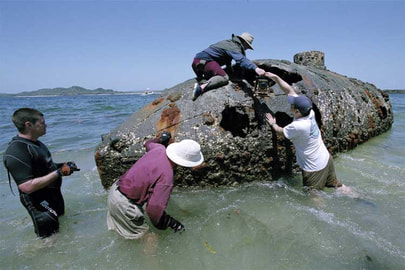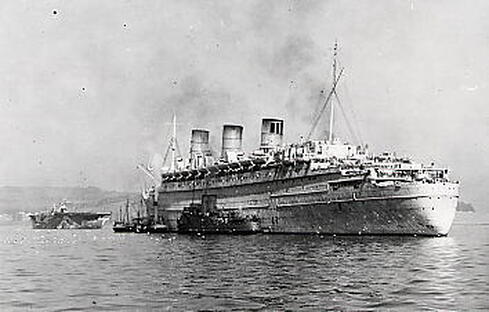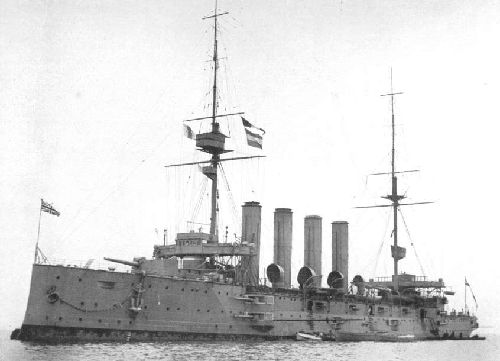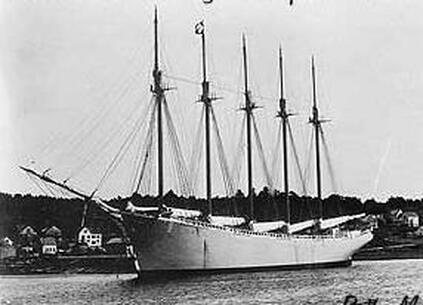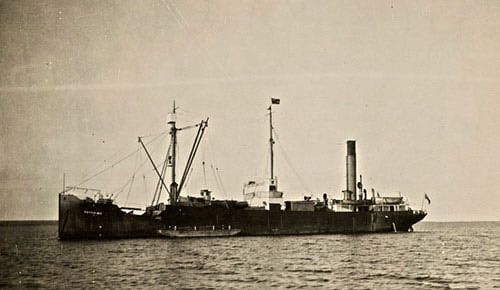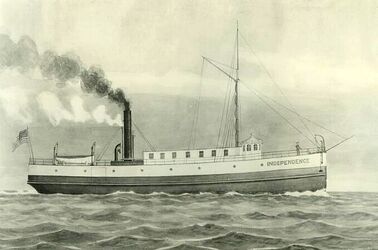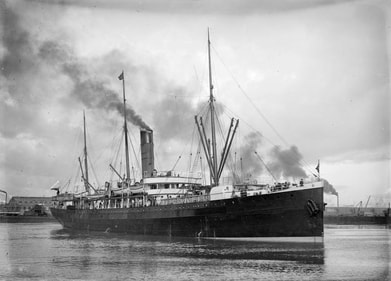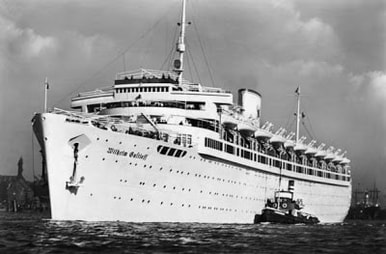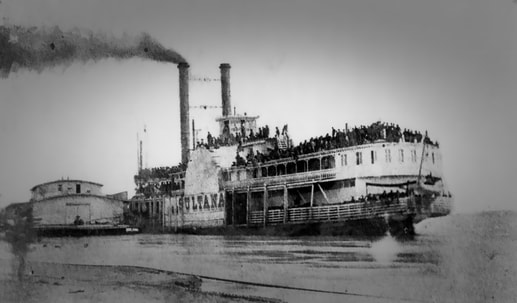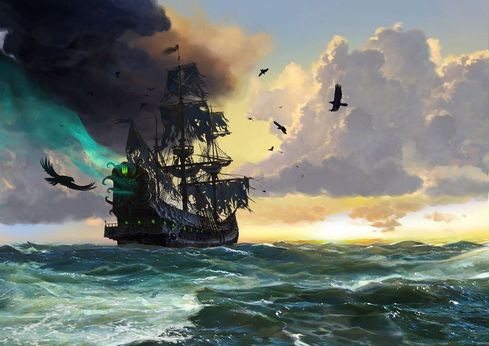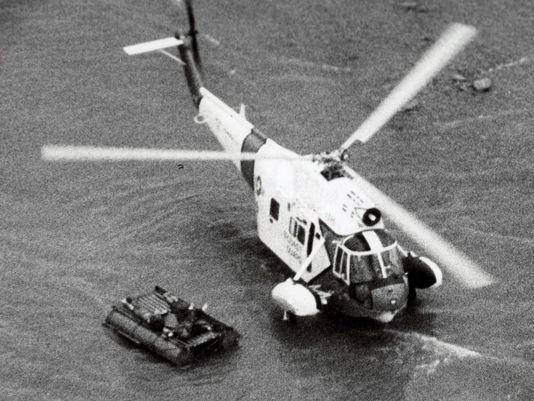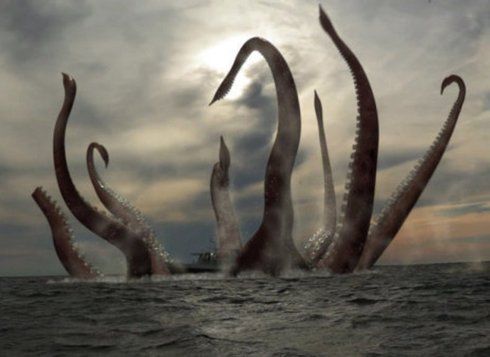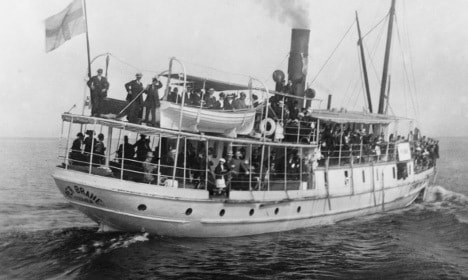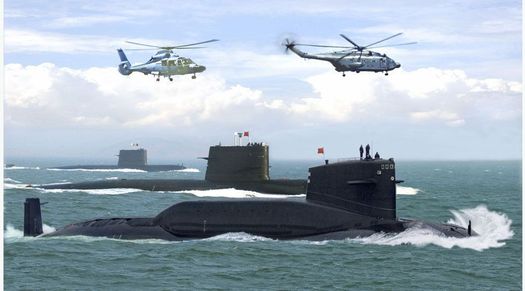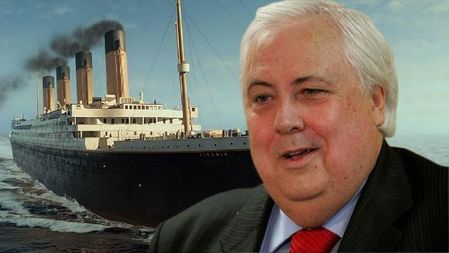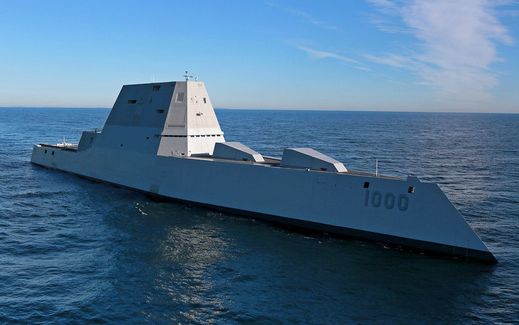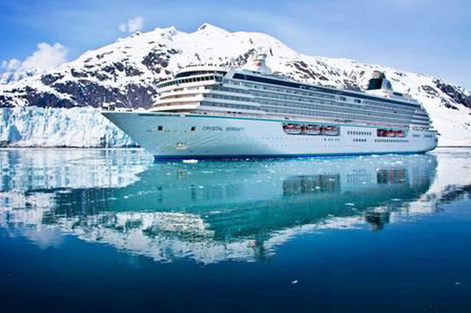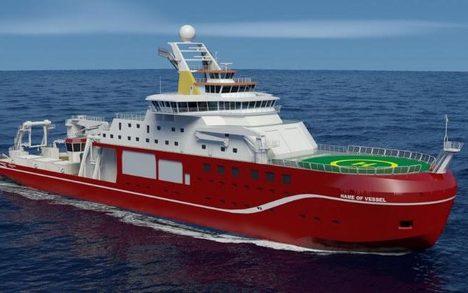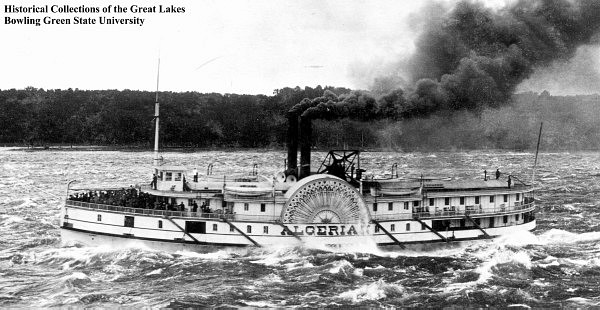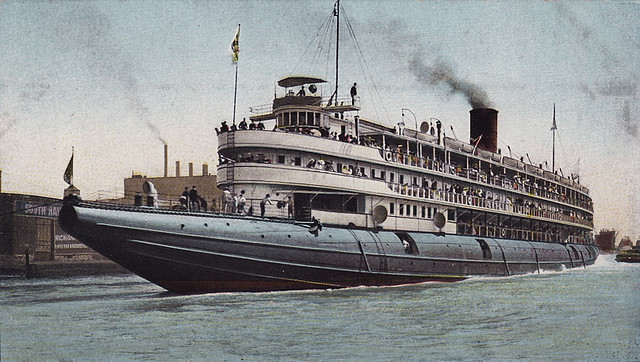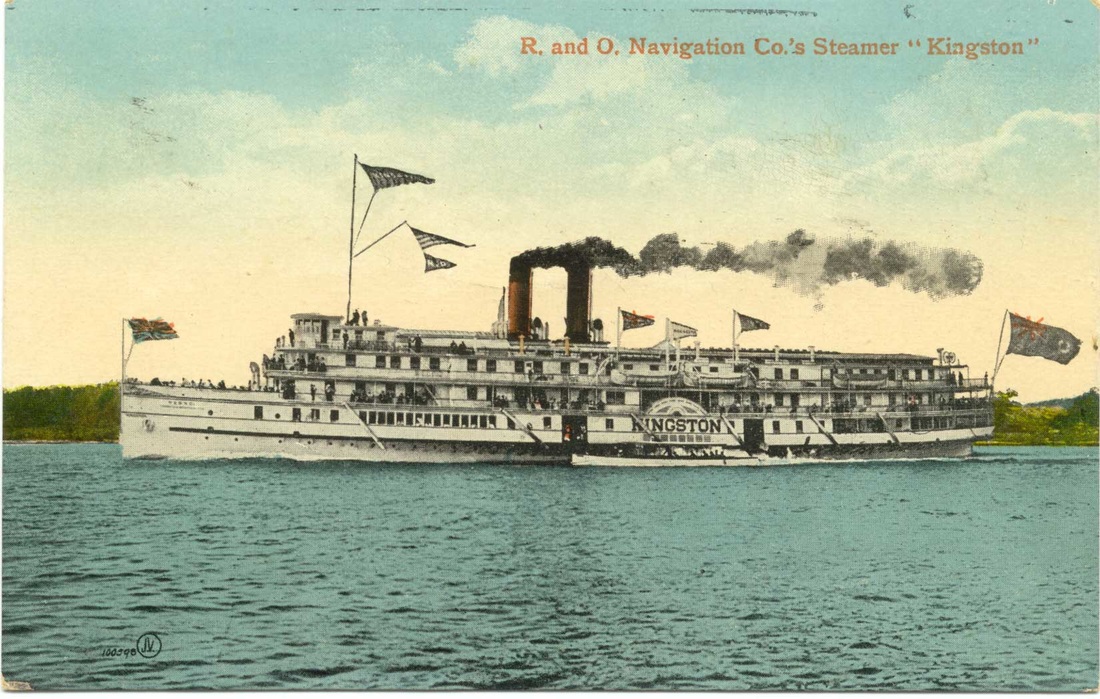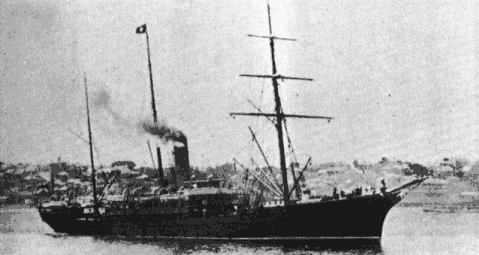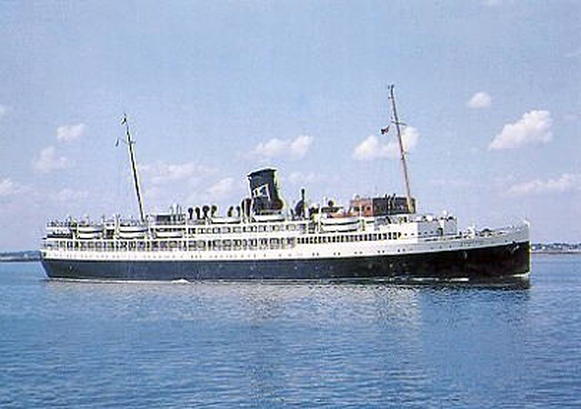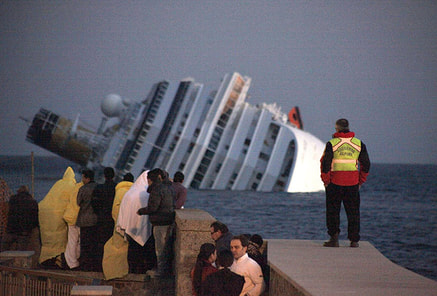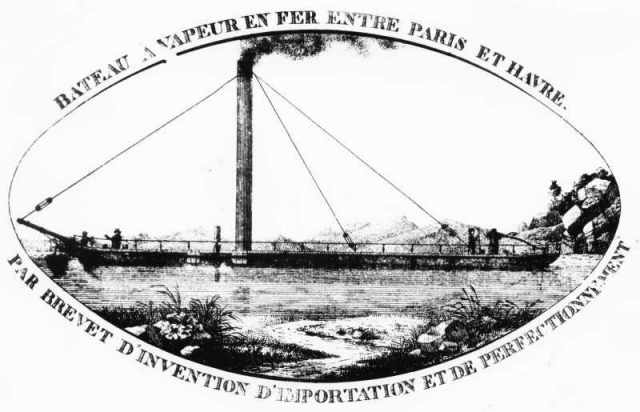Ships And Shipwreck Stories:
Use Pull-down Menu To Find More
The Burning Of The Noronic
Sanford Newman, a Cleveland man participating in a special August excursion aboard the Great Lakes passenger liner Noronic on Sept. 16, 1949, later said he thought it was about 2:30 a.m. when the fire that destroyed the ship was discovered. Newman and his wife were among the 524 passengers taking advantage of a special late-season rate on the Canada Steamship Line vessel. While other passengers were partying, the Newmans and friends were engaged in a hot game of cards in a parlor on C Deck, somewhere amidships. The ship was docked at Toronto for the night.
Sanford Newman, a Cleveland man participating in a special August excursion aboard the Great Lakes passenger liner Noronic on Sept. 16, 1949, later said he thought it was about 2:30 a.m. when the fire that destroyed the ship was discovered. Newman and his wife were among the 524 passengers taking advantage of a special late-season rate on the Canada Steamship Line vessel. While other passengers were partying, the Newmans and friends were engaged in a hot game of cards in a parlor on C Deck, somewhere amidships. The ship was docked at Toronto for the night.
Haunted Ship Constitution
Some years back I had the privilege of walking the decks of the last sailing ship ever commissioned by the U. S. Navy, the USS Constitution. The 250-year-old but well restored and cared-for ship was then, as it remains today, a museum piece anchored in Baltimore’s Inner Harbor. Rigged as a sloop-of-war, the Constitution remains a relic of America’s naval history. I roamed the vessel, marveling that 285 sailors could live together within the tight quarters of that 176-foot-long wooden ship. That they did it for months at sea seemed an incredible accomplishment. What I didn’t know then was that the old ship had a reputation as one of the most haunted ships in the world. Sailors on naval vessels moored nearby, in past years, reported sightings of spirit forms of men in outdated Navy uniform walking her decks.
Some years back I had the privilege of walking the decks of the last sailing ship ever commissioned by the U. S. Navy, the USS Constitution. The 250-year-old but well restored and cared-for ship was then, as it remains today, a museum piece anchored in Baltimore’s Inner Harbor. Rigged as a sloop-of-war, the Constitution remains a relic of America’s naval history. I roamed the vessel, marveling that 285 sailors could live together within the tight quarters of that 176-foot-long wooden ship. That they did it for months at sea seemed an incredible accomplishment. What I didn’t know then was that the old ship had a reputation as one of the most haunted ships in the world. Sailors on naval vessels moored nearby, in past years, reported sightings of spirit forms of men in outdated Navy uniform walking her decks.
Clouded fate of Liner La France
When launched by the wife of the late French President Charles De Gaulle on May 11, 1960, the 1,027-foot-long France was the longest and considered among the finest liners in the world. She held that title until the Queen Mary 2 came on the scene. The Queen Mary 2 now holds the record at 1,132 feet. While she remained on the high seas, first as the France and later as the Norway, after purchased in 1979 by the Norwegian Cruise Line, the ship was unexpectedly taken out of service when an explosion ripped through the engine room while it was moored in Miami in 2003.
When launched by the wife of the late French President Charles De Gaulle on May 11, 1960, the 1,027-foot-long France was the longest and considered among the finest liners in the world. She held that title until the Queen Mary 2 came on the scene. The Queen Mary 2 now holds the record at 1,132 feet. While she remained on the high seas, first as the France and later as the Norway, after purchased in 1979 by the Norwegian Cruise Line, the ship was unexpectedly taken out of service when an explosion ripped through the engine room while it was moored in Miami in 2003.
S.S. Kaiser Wilhelm II An Allied Troop Ship
There is a certain irony in that the German passenger liner S.S. Kaiser Wilhelm II happened to be on route to New York when the First World War broke out in Europe. After 12 years of regular service as a fine passenger ship, this would be the vessel’s last trip in this capacity. The news that the world was at war rippled around the world and had a big effect on the ships at sea. The master of the liner evaded British patrols and got his ship safely to New York. After that, the liner remained moored at New York, unable to venture back out to sea. Remember that the United States was a neutral nation during the early part of that war. Once the United States entered the war, the Kaiser Wilhelm II was seized by the military. While anchored at New York, German saboteurs slipped aboard and caused extensive damage to the ship’s machinery. It was rebuilt and put back in service as the transport ship USS Agamemnon.
There is a certain irony in that the German passenger liner S.S. Kaiser Wilhelm II happened to be on route to New York when the First World War broke out in Europe. After 12 years of regular service as a fine passenger ship, this would be the vessel’s last trip in this capacity. The news that the world was at war rippled around the world and had a big effect on the ships at sea. The master of the liner evaded British patrols and got his ship safely to New York. After that, the liner remained moored at New York, unable to venture back out to sea. Remember that the United States was a neutral nation during the early part of that war. Once the United States entered the war, the Kaiser Wilhelm II was seized by the military. While anchored at New York, German saboteurs slipped aboard and caused extensive damage to the ship’s machinery. It was rebuilt and put back in service as the transport ship USS Agamemnon.
First Atlantic Steamship Great Western
While the Savannah holds the distinction of being the first steamship to cross the Atlantic from the United States to Europe and back again, the fact that it only used its engine for a small portion of the trip, and relied mostly on sail power took some of that glory away. The first steamship to successfully make the trip across the Atlantic under steam power was the Great Western, designed by famed railroad engineer Isambard Kingdom Brunel and built by William Bristol for the Great Western Steamship Co. in 1837.
While the Savannah holds the distinction of being the first steamship to cross the Atlantic from the United States to Europe and back again, the fact that it only used its engine for a small portion of the trip, and relied mostly on sail power took some of that glory away. The first steamship to successfully make the trip across the Atlantic under steam power was the Great Western, designed by famed railroad engineer Isambard Kingdom Brunel and built by William Bristol for the Great Western Steamship Co. in 1837.
The Mysterious Lake Michigan Triangle
Like the infamous Bermuda Triangle, where aircraft and ships mysteriously disappear without trace, Lake Michigan also has a place where an unusual number of unexplained mysteries have occurred.
Some writers have noted these events and are dubbing the area the "Lake Michigan Triangle." When you search through Great Lakes lore by sifting through the dusty microfilms of old newspaper files, that area of Lake Michigan indeed offers its share of unsolved mysterious disappearances of men, ships and aircraft. There have been other strange happenings there as well.
Like the infamous Bermuda Triangle, where aircraft and ships mysteriously disappear without trace, Lake Michigan also has a place where an unusual number of unexplained mysteries have occurred.
Some writers have noted these events and are dubbing the area the "Lake Michigan Triangle." When you search through Great Lakes lore by sifting through the dusty microfilms of old newspaper files, that area of Lake Michigan indeed offers its share of unsolved mysterious disappearances of men, ships and aircraft. There have been other strange happenings there as well.
Prophecy Foretold Of Titanic Disaster
Fourteen years before the Titanic disaster of 1912, a little-remember author named Morgan Robertson's book, Futility, was published. That book got international attention relatively late because it was found to have been a remarkable "prophecy" of the 1912 sinking, almost down to the name of the ship. The novel told of a steamship named Titan that was touted as unsinkable, struck an iceberg while making passage across the North Atlantic, and sank with great loss of life. While not all of the events described in the book detailed the real Titanic disaster, there were enough similarities to give Robertson a "prophet" status among authors of that day.
Fourteen years before the Titanic disaster of 1912, a little-remember author named Morgan Robertson's book, Futility, was published. That book got international attention relatively late because it was found to have been a remarkable "prophecy" of the 1912 sinking, almost down to the name of the ship. The novel told of a steamship named Titan that was touted as unsinkable, struck an iceberg while making passage across the North Atlantic, and sank with great loss of life. While not all of the events described in the book detailed the real Titanic disaster, there were enough similarities to give Robertson a "prophet" status among authors of that day.
Armada Of Ships Under San Francisco
A contractor excavating for the foundation of a new condominium development recently came upon the hull of the remains of a gold-rush era sailing ship deep under the City of San Francisco. The discovery sparked an archaeological recovery of the vessel’s aging timbers, and also kicked some dust off a piece of San Francisco history that nearly became lost in the contemporary rush. It seems this great hulk of an ocean-going vessel was one of an estimated 600 ships that now lie buried under a part of the city that grew right out into what was once known as Yerba Buena Cove, once part of San Francisco Bay.
A contractor excavating for the foundation of a new condominium development recently came upon the hull of the remains of a gold-rush era sailing ship deep under the City of San Francisco. The discovery sparked an archaeological recovery of the vessel’s aging timbers, and also kicked some dust off a piece of San Francisco history that nearly became lost in the contemporary rush. It seems this great hulk of an ocean-going vessel was one of an estimated 600 ships that now lie buried under a part of the city that grew right out into what was once known as Yerba Buena Cove, once part of San Francisco Bay.
New York Typhoid Outbreak Traced To S.S. Massilia
The French passenger liner S. S. Massilia is best remembered by historians as the ship that carried an impoverished, lice-infested manifest of passengers from Europe who were infected with the dreaded typhoid fever. After the disease broke out on the Lower East Side in the winter of 1892, doctors traced its source to third class Russian-Jewish immigrants who had arrived that winter on the Massilia. The Health Department rounded up all of the passengers and anyone who had contact with them and quarantined them on North Brother Island, a 16-acre island that assured they would be separated from the city-at-large. Click For More
The French passenger liner S. S. Massilia is best remembered by historians as the ship that carried an impoverished, lice-infested manifest of passengers from Europe who were infected with the dreaded typhoid fever. After the disease broke out on the Lower East Side in the winter of 1892, doctors traced its source to third class Russian-Jewish immigrants who had arrived that winter on the Massilia. The Health Department rounded up all of the passengers and anyone who had contact with them and quarantined them on North Brother Island, a 16-acre island that assured they would be separated from the city-at-large. Click For More
Chief Wawatam; Historic Great Lakes Workhorse
Older residents of Michigan, especially those who lived near or rode the ferries that preceded the bridge at the Straits of Mackinaw, fondly remember the railroad car ferry Chief Wawatam. The old Chief’s black smoke could be seen hovering over the straits from miles away, and people in the two port towns remember the sounds of the vessel coming to dock and the steam engine that moved the cars on and off its decks. The sounds and visions were a way of life for residents of both St. Ignace and Mackinaw City.
Older residents of Michigan, especially those who lived near or rode the ferries that preceded the bridge at the Straits of Mackinaw, fondly remember the railroad car ferry Chief Wawatam. The old Chief’s black smoke could be seen hovering over the straits from miles away, and people in the two port towns remember the sounds of the vessel coming to dock and the steam engine that moved the cars on and off its decks. The sounds and visions were a way of life for residents of both St. Ignace and Mackinaw City.
Listing Hoegh Osaka Safely Returned to Port
The Norwegian car transport ship Hoegh Osaka made sensational news January 3, 2015 when it took on a serious list and forced its crew to drive it aground off the Isle of Wight at the start of a trip from Southampton, England, to Germany. The 590-foot freighter made a spectacular site as it lay almost on its side for four days in the English Channel. The ship was loaded with 1,400 new cars that included 1,200 Jaguars and Land Rovers plus heavy construction equipment. All of the vehicles were strapped down and those that were not flooded may be salvaged.
The Norwegian car transport ship Hoegh Osaka made sensational news January 3, 2015 when it took on a serious list and forced its crew to drive it aground off the Isle of Wight at the start of a trip from Southampton, England, to Germany. The 590-foot freighter made a spectacular site as it lay almost on its side for four days in the English Channel. The ship was loaded with 1,400 new cars that included 1,200 Jaguars and Land Rovers plus heavy construction equipment. All of the vehicles were strapped down and those that were not flooded may be salvaged.
Impact Of The Laconia Incident
There was a time in the history of human warfare when soldiers in the field played by internationally accepted rules. When the Germans first introduced U-boats on the open sea, for example, the men who sank the allied ships sounded notice of their intention, and gave passengers and crew members time to escape the targeted ship in lifeboats before a torpedo sent it to the bottom. This kind of chivalry still existed even at the start of World War II. But it was abruptly halted by official German command after the sinking of the Cunard liner Laconia off the coast of Africa in the South Atlantic on Sept. 12, 1942.
There was a time in the history of human warfare when soldiers in the field played by internationally accepted rules. When the Germans first introduced U-boats on the open sea, for example, the men who sank the allied ships sounded notice of their intention, and gave passengers and crew members time to escape the targeted ship in lifeboats before a torpedo sent it to the bottom. This kind of chivalry still existed even at the start of World War II. But it was abruptly halted by official German command after the sinking of the Cunard liner Laconia off the coast of Africa in the South Atlantic on Sept. 12, 1942.
Julius Kroehl's "Sub Marine Explorer" Of 1866
Among the early inventors experimenting with underwater boats was a brilliant German immigrant to the United States, Julius H. Kroehl. Unbeknown to many marine historians is the fact that Kroehl successfully built and put his craft, known as Sub Marine Explorer, to sea off San Telmo, Panama, in 1866. The Sub Marine Explorer proved to be a successful invention that Kroehl an his crew took to relatively extreme depths of the Pacific and returned to the surface again. Unfortunately, little was known about decompression sickness caused from deep dives in those days. Kroehl did not die in a sunken submarine, but rather of the bends in 1967 after using the vessel to take him to the bottom to collect oysters and pearls.
Among the early inventors experimenting with underwater boats was a brilliant German immigrant to the United States, Julius H. Kroehl. Unbeknown to many marine historians is the fact that Kroehl successfully built and put his craft, known as Sub Marine Explorer, to sea off San Telmo, Panama, in 1866. The Sub Marine Explorer proved to be a successful invention that Kroehl an his crew took to relatively extreme depths of the Pacific and returned to the surface again. Unfortunately, little was known about decompression sickness caused from deep dives in those days. Kroehl did not die in a sunken submarine, but rather of the bends in 1967 after using the vessel to take him to the bottom to collect oysters and pearls.
The Haunting Of The Queen Mary
Among the most famous liners of the world is the Queen Mary, a Cunard Line ship that sailed the seas from 1936 to 1967. She now serves as a floating hotel at Long Beach, California. The Queen Mary was afloat for service as a troop ship during World War II, and is well remembered for her years of service as one of the finest and largest passenger liners on the North Atlantic service. And like all historic places in the world, this vessel is quite haunted.
Among the most famous liners of the world is the Queen Mary, a Cunard Line ship that sailed the seas from 1936 to 1967. She now serves as a floating hotel at Long Beach, California. The Queen Mary was afloat for service as a troop ship during World War II, and is well remembered for her years of service as one of the finest and largest passenger liners on the North Atlantic service. And like all historic places in the world, this vessel is quite haunted.
Sinking The Live Bait Squadron
Even before it happened, the British Admiralty joked about the probability of failure. It seems that Rear Admiral Henry H. Campbell’s Seventh Cruiser Squadron was totally unsuited for its job of patrolling the high seas for German u-boats. The big coal-burning steamers were secretly known as the "live bait squadron." The time was September 22, 1914, and England was at war with Germany. Campbell’s squadron was assigned to guard the entrances of the North Sea against u-boats. It was a task that the admiralty wanted to assign to other fleet vessels as soon as possible. The nation was just tooling up for the war and there just weren’t enough naval ships to do all that needed to be done.
Even before it happened, the British Admiralty joked about the probability of failure. It seems that Rear Admiral Henry H. Campbell’s Seventh Cruiser Squadron was totally unsuited for its job of patrolling the high seas for German u-boats. The big coal-burning steamers were secretly known as the "live bait squadron." The time was September 22, 1914, and England was at war with Germany. Campbell’s squadron was assigned to guard the entrances of the North Sea against u-boats. It was a task that the admiralty wanted to assign to other fleet vessels as soon as possible. The nation was just tooling up for the war and there just weren’t enough naval ships to do all that needed to be done.
The Strange Case Of The Carroll A. Deering
It was on Jan. 31, 1921 that a passing ship reported an unidentified five-masted schooner hard aground on Diamond Shoals, North Carolina. The Coast Guard responded and found that the ill-fated ship was the Carroll A. Deering, its sails still set, food in the state of preparation in the galley, but there was no trace of the ship’s 11-member crew. And thus began a story that has become another one of the great mysteries of the sea. Not only does the Deering story compare to another famous mystery ship, the Mary Celeste, found adrift without a crew off the coast of France, but there are implications of a Bermuda Triangle kind of event.
It was on Jan. 31, 1921 that a passing ship reported an unidentified five-masted schooner hard aground on Diamond Shoals, North Carolina. The Coast Guard responded and found that the ill-fated ship was the Carroll A. Deering, its sails still set, food in the state of preparation in the galley, but there was no trace of the ship’s 11-member crew. And thus began a story that has become another one of the great mysteries of the sea. Not only does the Deering story compare to another famous mystery ship, the Mary Celeste, found adrift without a crew off the coast of France, but there are implications of a Bermuda Triangle kind of event.
Strange Story Of Ghost Ship Baychimo
The Baychimo was a steel cargo steamer involved in trading pelts for provisions in Inuit settlements along the coast of the Northwest Territories of Canada. During the winter of 1931-32 the ship became trapped in pack ice and was left abandoned by the crew. The Baychimo survived the winter, however, and over the next several decades there were several sightings of the floating crewless hulk. Some people actually managed to board the ship but never were equipped to salvage it or they were driven away by bad weather. The last reported sighting was by some Inuit hunters in 1969, a full 38 years after it was abandoned. They said it was stuck fast in pack ice in the Beaufort Sea between Point Barrow and Icy Cape off the northwestern coast of Alaska. Thus the Baychimo became a well-known ghost ship of the Canadian north.
The Baychimo was a steel cargo steamer involved in trading pelts for provisions in Inuit settlements along the coast of the Northwest Territories of Canada. During the winter of 1931-32 the ship became trapped in pack ice and was left abandoned by the crew. The Baychimo survived the winter, however, and over the next several decades there were several sightings of the floating crewless hulk. Some people actually managed to board the ship but never were equipped to salvage it or they were driven away by bad weather. The last reported sighting was by some Inuit hunters in 1969, a full 38 years after it was abandoned. They said it was stuck fast in pack ice in the Beaufort Sea between Point Barrow and Icy Cape off the northwestern coast of Alaska. Thus the Baychimo became a well-known ghost ship of the Canadian north.
The Three Independence Disasters
The year 1852-53-54 proved to be the years that three American steamships named Independence were lost with loss of life. Two were destroyed by fire and explosion. Over 150 passengers and crew members perished when the steamer Independence went aground on Maryetta Island, California on February 16, 1853. Another seven persons died when the boiler exploded, destroying the propeller Independence near Sault Ste. Marie, Lake Superior, on November 22, 1854. Both ships were among the new breed of early steamships that were beginning to replace sailing ships on the world seas. Both were wooden hulled vessels with early and unpredictable steam powered boilers that were responsible for the disasters.
The year 1852-53-54 proved to be the years that three American steamships named Independence were lost with loss of life. Two were destroyed by fire and explosion. Over 150 passengers and crew members perished when the steamer Independence went aground on Maryetta Island, California on February 16, 1853. Another seven persons died when the boiler exploded, destroying the propeller Independence near Sault Ste. Marie, Lake Superior, on November 22, 1854. Both ships were among the new breed of early steamships that were beginning to replace sailing ships on the world seas. Both were wooden hulled vessels with early and unpredictable steam powered boilers that were responsible for the disasters.
The Warrimoo’s Mark in History
In addition to its strange name, the New Zealand passenger ship Warrimoo and its crew hold the distinction of doing something nobody else may ever do . . . that is stand in two different places and in two different times at the same moment. During a routine trip on the open Pacific Ocean, traveling from Vancouver to Australia on December 31, 1899, as the steamer was approaching the equator the ship’s navigator notified Captain John Phillips that they were also approaching the International Date Line. This information inspired Captain Phillips to navigate the Warrimoo to the exact point that both equatorial and date lines crossed. There the ship sat at the magic moment of midnight, New Year's Eve.
In addition to its strange name, the New Zealand passenger ship Warrimoo and its crew hold the distinction of doing something nobody else may ever do . . . that is stand in two different places and in two different times at the same moment. During a routine trip on the open Pacific Ocean, traveling from Vancouver to Australia on December 31, 1899, as the steamer was approaching the equator the ship’s navigator notified Captain John Phillips that they were also approaching the International Date Line. This information inspired Captain Phillips to navigate the Warrimoo to the exact point that both equatorial and date lines crossed. There the ship sat at the magic moment of midnight, New Year's Eve.
Wilhelm Gustloff – Worst Sea Disaster Ever
The sinking of the German passenger liner Wilhelm Gustloff by a Soviet submarine in the Baltic Sea in 1945, during the final days of World War II, claimed over 9,400 lives. The incident went down in history as the worst single sea disaster in human history. Because it happened under the fog of war, and involved mostly German women and children trying to escape from the advancing Russian army at Gotenhafen (now Gdansk, Poland), news of the sinking of the Gustloff went almost unnoticed in the Western world. Hitler suppressed the news, believing such a story would cause the German people to question his invincibility.
The sinking of the German passenger liner Wilhelm Gustloff by a Soviet submarine in the Baltic Sea in 1945, during the final days of World War II, claimed over 9,400 lives. The incident went down in history as the worst single sea disaster in human history. Because it happened under the fog of war, and involved mostly German women and children trying to escape from the advancing Russian army at Gotenhafen (now Gdansk, Poland), news of the sinking of the Gustloff went almost unnoticed in the Western world. Hitler suppressed the news, believing such a story would cause the German people to question his invincibility.
Sultana
Titanic Sinking Was Not The Worst Marine Disaster
The Titanic story was clearly among the more spectacular and highly publicized marine disasters. But the roles of naval history are filled with other events of similar if not greater magnitude. For example, 1,024 people died when the Canadian Pacific liner Empress of Ireland sank on the St. Lawrence River after a collision with a Norwegian ship only two years later, in May 1914. An even worse tragedy occurred when the riverboat Sultana exploded and sank on the Mississippi River in 1865, killing an estimated 1,547 people. Many of the passengers were Civil War veterans returning home from battle. More than 1,000 members of a church picnic excursion perished in a fire that destroyed the steamship General Slocum in a place known as Hell Gate on the East River at New York City on June 15, 1904.
The Titanic story was clearly among the more spectacular and highly publicized marine disasters. But the roles of naval history are filled with other events of similar if not greater magnitude. For example, 1,024 people died when the Canadian Pacific liner Empress of Ireland sank on the St. Lawrence River after a collision with a Norwegian ship only two years later, in May 1914. An even worse tragedy occurred when the riverboat Sultana exploded and sank on the Mississippi River in 1865, killing an estimated 1,547 people. Many of the passengers were Civil War veterans returning home from battle. More than 1,000 members of a church picnic excursion perished in a fire that destroyed the steamship General Slocum in a place known as Hell Gate on the East River at New York City on June 15, 1904.
Legend of The Flying Dutchman
As the story is told, an ancient Seventeenth Century Dutch sailing ship is occasionally seen by ship’s crews as their vessels battle the elements to clear the Cape of Good Hope at the southern tip of Africa. This ghost story has its origins in both Dutch and German legend. The most common is a tale about a Captain Hendrick Vanderdecken, who set sail in 1680 from Amsterdam to Batavia, in Dutch East India, and his ship disappeared in a gale while rounding the cape. It is said that Vanderdecken ignored the danger and pressed on into the teeth of the tempest. The ship foundered, sending all aboard to their deaths. As punishment for his foolishness Vanderdecken and his ship were doomed to spend eternity fighting the tempest at the Cape.
As the story is told, an ancient Seventeenth Century Dutch sailing ship is occasionally seen by ship’s crews as their vessels battle the elements to clear the Cape of Good Hope at the southern tip of Africa. This ghost story has its origins in both Dutch and German legend. The most common is a tale about a Captain Hendrick Vanderdecken, who set sail in 1680 from Amsterdam to Batavia, in Dutch East India, and his ship disappeared in a gale while rounding the cape. It is said that Vanderdecken ignored the danger and pressed on into the teeth of the tempest. The ship foundered, sending all aboard to their deaths. As punishment for his foolishness Vanderdecken and his ship were doomed to spend eternity fighting the tempest at the Cape.
The Strange Story of Shipwreck Survivor Dennis Hale
During my years of reporting for various Michigan newspapers, one of the most memorable stories I came upon was that of Dennis Hale, an Ohio man who was the sole survivor of a shipwreck in Lake Huron. Hale's experience occurred on Nov. 29, 1966. When I met him 25 years later, he was still reeling from its effect on him. You see Dennis Hale defied all the rules. He survived even though he spent 38 hours on an open raft, in the midst of a winter snow storm, wearing nothing more than his underwear and a life jacket.
During my years of reporting for various Michigan newspapers, one of the most memorable stories I came upon was that of Dennis Hale, an Ohio man who was the sole survivor of a shipwreck in Lake Huron. Hale's experience occurred on Nov. 29, 1966. When I met him 25 years later, he was still reeling from its effect on him. You see Dennis Hale defied all the rules. He survived even though he spent 38 hours on an open raft, in the midst of a winter snow storm, wearing nothing more than his underwear and a life jacket.
Mythology Comes To Life – Kraken Is Real
On exhibit in England’s Natural History Museum is a giant squid, probably the largest ever found. This creature measures 30-feet in length, has eight thick “arms”, two extra-long tentacles lined with suckers ringed with teeth, and massive eyes measuring 10 inches across. This breed of squid, caught off the Falkland Islands in 2005, is believed to live at depths of up to 3,300 feet and is rarely seen. But they apparently were seen on occasions by early ocean navigators, thus becoming the foundation of the ancient stories of sea monsters. Most fearsome of them all was the kraken.
On exhibit in England’s Natural History Museum is a giant squid, probably the largest ever found. This creature measures 30-feet in length, has eight thick “arms”, two extra-long tentacles lined with suckers ringed with teeth, and massive eyes measuring 10 inches across. This breed of squid, caught off the Falkland Islands in 2005, is believed to live at depths of up to 3,300 feet and is rarely seen. But they apparently were seen on occasions by early ocean navigators, thus becoming the foundation of the ancient stories of sea monsters. Most fearsome of them all was the kraken.
Sinking of the Swedish Ship Per Brahe
The tragic sinking of the small steamship Per Brahe on Lake Vattern in Southern Sweden on November 19, 1918, and the loss of all 24 souls aboard its decks, became a major news story that fall. This was largely because John Bauer, acclaimed Swedish artist and illustrator of children’s books was aboard with his wife and their young son. The story became sensational when the wreck was located, raised and and the ruined vessel refloated four years later.
The tragic sinking of the small steamship Per Brahe on Lake Vattern in Southern Sweden on November 19, 1918, and the loss of all 24 souls aboard its decks, became a major news story that fall. This was largely because John Bauer, acclaimed Swedish artist and illustrator of children’s books was aboard with his wife and their young son. The story became sensational when the wreck was located, raised and and the ruined vessel refloated four years later.
China’s Growing Nuclear Submarine Fleet
It was in the fall of 2007 that the U. S. Navy, while conducting fleet exercises surrounding the 1,000-foot super carrier USS Kitty Hawk in the Northern Pacific, was dumbstruck when a Chinese Song Class diesel-electric attack submarine surfaced unexpectedly in the midst of a vast naval armada of U. S. ships. The incident proved to be a major embarrassment for the Pentagon. Somehow the Chinese submarine had managed to slip through the US Navy’s security system and come within range for launching torpedoes or missiles at the carrier. Before this happened, the Americans had no idea that China’s submarine fleet had reached this level of sophistication, or that it posed this level of a threat.
It was in the fall of 2007 that the U. S. Navy, while conducting fleet exercises surrounding the 1,000-foot super carrier USS Kitty Hawk in the Northern Pacific, was dumbstruck when a Chinese Song Class diesel-electric attack submarine surfaced unexpectedly in the midst of a vast naval armada of U. S. ships. The incident proved to be a major embarrassment for the Pentagon. Somehow the Chinese submarine had managed to slip through the US Navy’s security system and come within range for launching torpedoes or missiles at the carrier. Before this happened, the Americans had no idea that China’s submarine fleet had reached this level of sophistication, or that it posed this level of a threat.
Will A Titanic Return to the High Seas?
There have been at least two serious plans over the years to rebuild the infamous luxury liner Titanic which sank on its maiden voyage after striking an iceberg in the North Atlantic and taking over 1,500 passengers and crew members to the bottom with it. Indeed, movies and books have been produced about that 1912 disaster on the high seas. While there have been ship disasters claiming as many and even more lives, the Titanic disaster has remained indelible among all of the nautical stories of the sea. It should be of no surprise that investors over the years have explored the possibility of building an exact replica of the Titanic, naming it Titanic II, and turning it into a floating pleasure palace for the rich and famous.
There have been at least two serious plans over the years to rebuild the infamous luxury liner Titanic which sank on its maiden voyage after striking an iceberg in the North Atlantic and taking over 1,500 passengers and crew members to the bottom with it. Indeed, movies and books have been produced about that 1912 disaster on the high seas. While there have been ship disasters claiming as many and even more lives, the Titanic disaster has remained indelible among all of the nautical stories of the sea. It should be of no surprise that investors over the years have explored the possibility of building an exact replica of the Titanic, naming it Titanic II, and turning it into a floating pleasure palace for the rich and famous.
$4.4 Billion Dollar Destroyer Zumwalt
Among the new and peculiar looking naval ships emerging from the famous Bath Iron Works of Maine in recent years is the USS Zumwalt, a giant 600-foot-long destroyer that represents an entirely new class of fighting vessel. The designers claim that its sloped hull makes it harder for radar to find because it is only seen as a small fishing boat. Critics say the $4.4 billion spent in designing and building this ship is an extravagant waste of taxpayer dollars.
Among the new and peculiar looking naval ships emerging from the famous Bath Iron Works of Maine in recent years is the USS Zumwalt, a giant 600-foot-long destroyer that represents an entirely new class of fighting vessel. The designers claim that its sloped hull makes it harder for radar to find because it is only seen as a small fishing boat. Critics say the $4.4 billion spent in designing and building this ship is an extravagant waste of taxpayer dollars.
Northwest Passage Luxury Cruise
By James Donahue
Aug. 27, 2016
It is happening faster than the prognosticators ever thought it would. So much ice has melted away that the long sought Northwest Passage through the Canadian arctic appears to already be open for shipping . . . at least during the summer months. Apparently some vessels have already made successful trips through the passage. And now the Crystal Serenity, an 820-foot, nine-deck tall passenger liner is in the midst of a unique trip through the passage with 1,070 passengers.
By James Donahue
Aug. 27, 2016
It is happening faster than the prognosticators ever thought it would. So much ice has melted away that the long sought Northwest Passage through the Canadian arctic appears to already be open for shipping . . . at least during the summer months. Apparently some vessels have already made successful trips through the passage. And now the Crystal Serenity, an 820-foot, nine-deck tall passenger liner is in the midst of a unique trip through the passage with 1,070 passengers.
A Looming Era of Automated Ships
I must down to the seas again, to the lonely sea and the sky,
And all I ask is a tall ship and a star to steer her by
English poet John Masefield’s memorable lines depict a haunting calling of sailors to the great ships that have sailed the oceans for centuries. Men who love ships and feel this call may be saddened by news that the time of men standing watch at the wheel of these great beasts of the high seas may soon be replaced by automated ships. We are referring to ships that are completely automated with captains manning them from land-based computers from the other side of the world.
I must down to the seas again, to the lonely sea and the sky,
And all I ask is a tall ship and a star to steer her by
English poet John Masefield’s memorable lines depict a haunting calling of sailors to the great ships that have sailed the oceans for centuries. Men who love ships and feel this call may be saddened by news that the time of men standing watch at the wheel of these great beasts of the high seas may soon be replaced by automated ships. We are referring to ships that are completely automated with captains manning them from land-based computers from the other side of the world.
The Burning Kingston
In the seventy-three remarkable years that the iron hulled Canadian passenger steamer Kingston remained in service on the Great Lakes; from 1855 to 1928, its worst enemy appeared to be fire. Flames ravaged the ship twice in quick succession, in 1872 and again in 1873. The Kingston was partially burned again in 1905. Each time it was rebuilt to run again. Flames did their first work on the Kingston on a fine summer afternoon in June, 1872, as the liner steamed up the St. Lawrence River from Brockville, bound for Toronto with about 100 passengers and a full cargo of freight.
In the seventy-three remarkable years that the iron hulled Canadian passenger steamer Kingston remained in service on the Great Lakes; from 1855 to 1928, its worst enemy appeared to be fire. Flames ravaged the ship twice in quick succession, in 1872 and again in 1873. The Kingston was partially burned again in 1905. Each time it was rebuilt to run again. Flames did their first work on the Kingston on a fine summer afternoon in June, 1872, as the liner steamed up the St. Lawrence River from Brockville, bound for Toronto with about 100 passengers and a full cargo of freight.
The Ship that Toppled a Water Tower
The Christopher Columbus, an oddly shaped "whaleback" style passenger liner, turned out to be one of the most popular and successful cruise vessels to traverse the Great Lakes. People liked the ugly ship with a bow that looked like the snout of a pig. Those who booked passage said it offered a smooth ride, even in a rolling sea. The popularity of the Columbus grew and during its 44-years, the steamer carried a record 2.6 million passengers. There apparently was only one accident to mar the boat's nearly perfectly safety record. It happened at Milwaukee on June 30, 1917, when the Columbus accidentally struck and toppled a 100-foot water tower on the bank of the Milwaukee River.
The Christopher Columbus, an oddly shaped "whaleback" style passenger liner, turned out to be one of the most popular and successful cruise vessels to traverse the Great Lakes. People liked the ugly ship with a bow that looked like the snout of a pig. Those who booked passage said it offered a smooth ride, even in a rolling sea. The popularity of the Columbus grew and during its 44-years, the steamer carried a record 2.6 million passengers. There apparently was only one accident to mar the boat's nearly perfectly safety record. It happened at Milwaukee on June 30, 1917, when the Columbus accidentally struck and toppled a 100-foot water tower on the bank of the Milwaukee River.
The Burning Kingston
In the seventy-three remarkable years that the iron hulled Canadian passenger steamer Kingston remained in service on the Great Lakes; from 1855 to 1928, its worst enemy appeared to be fire. Flames ravaged the ship twice in quick succession, in 1872 and again in 1873. The Kingston was partially burned agaln in 1905. Each time it was rebuilt to run again.
In the seventy-three remarkable years that the iron hulled Canadian passenger steamer Kingston remained in service on the Great Lakes; from 1855 to 1928, its worst enemy appeared to be fire. Flames ravaged the ship twice in quick succession, in 1872 and again in 1873. The Kingston was partially burned agaln in 1905. Each time it was rebuilt to run again.
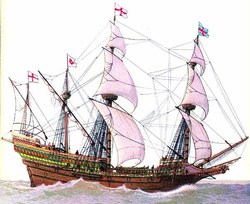
Last Fight For The HMS Revenge
Back when the British Navy was the finest naval fleet in the world the Revenge was among the famed ships that helped rule the high seas. The Revenge was a 500-ton galleon built in 1577 by the leading English shipwright Matthew Baker. With its new "race-built" design, the Revenge was considered among the finest galleons in the world. The high poop deck, a feature of the older galleons, was replaced by a lower series of decks stepped down into the waist of the ship. She had a lower forecastle. This made the Revenge a "long lean fighting machine" of its time. But all great warships have a final battle. This is how the Revenge met its end. Story
Back when the British Navy was the finest naval fleet in the world the Revenge was among the famed ships that helped rule the high seas. The Revenge was a 500-ton galleon built in 1577 by the leading English shipwright Matthew Baker. With its new "race-built" design, the Revenge was considered among the finest galleons in the world. The high poop deck, a feature of the older galleons, was replaced by a lower series of decks stepped down into the waist of the ship. She had a lower forecastle. This made the Revenge a "long lean fighting machine" of its time. But all great warships have a final battle. This is how the Revenge met its end. Story
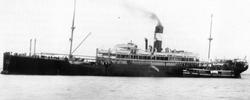
“Unsinkable” Waratah Disappeared On First Voyage
The world remembers the Titanic because of its great size and the fact that her builders boasted the ship was unsinkable. Yet the vessel sank with great loss of life on its maiden voyage across the North Atlantic. Nearly forgotten in naval history is the story of another “unsinkable” ship, the British liner Waratah, that also sank on its maiden voyage from England to Australia and then back again. The Story
The world remembers the Titanic because of its great size and the fact that her builders boasted the ship was unsinkable. Yet the vessel sank with great loss of life on its maiden voyage across the North Atlantic. Nearly forgotten in naval history is the story of another “unsinkable” ship, the British liner Waratah, that also sank on its maiden voyage from England to Australia and then back again. The Story
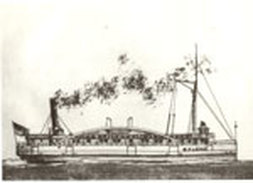
Wreck Of The Galena
The 193-foot-long wooden propeller slammed into the rocks with a sudden jolt that threw passengers from their bunks and rattled pans in the galley. Broadbridge grabbed the chadburn and sent the order to the engine room to reverse the engines. His first hope was that the ship could break free and that the hull was not severely damaged. But the steamer didn’t budge.
The 193-foot-long wooden propeller slammed into the rocks with a sudden jolt that threw passengers from their bunks and rattled pans in the galley. Broadbridge grabbed the chadburn and sent the order to the engine room to reverse the engines. His first hope was that the ship could break free and that the hull was not severely damaged. But the steamer didn’t budge.
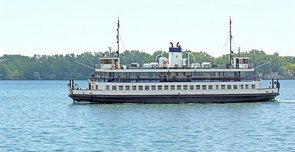
Burma Ferry Aung Tagun-3 Disaster
The crowded 19-year-old two-deck ferry Aung Tagun-3 capsized in a storm off the coast of Myanmar, formerly the nation of Burma on Friday, March 13, leaving more than 60 passengers dead, authorities said. Because the vessel was packed with over 200 people, many of their names not on the ship’s manifest, the exact death toll may never be known. The ferry left the port of Taunggok with about 129 tons of cargo and its decks crowded with passengers in the evening, bound north for Sittwe. When about 50 miles into the voyage the vessel was struck by heavy rains and rough weather that capsized and then sank it off the town of Myebon, officials said. More Story
The crowded 19-year-old two-deck ferry Aung Tagun-3 capsized in a storm off the coast of Myanmar, formerly the nation of Burma on Friday, March 13, leaving more than 60 passengers dead, authorities said. Because the vessel was packed with over 200 people, many of their names not on the ship’s manifest, the exact death toll may never be known. The ferry left the port of Taunggok with about 129 tons of cargo and its decks crowded with passengers in the evening, bound north for Sittwe. When about 50 miles into the voyage the vessel was struck by heavy rains and rough weather that capsized and then sank it off the town of Myebon, officials said. More Story
Historic Steamship Aberdeen
She was a modest steamship by today’s standards. The Aberdeen was 3,616 gross tons and measuring 362 feet in length. But it went down in history as the first steamship of Scotland’s Aberdeen Line, later coming under control of the great White Star Steamship Line. Like her sister ships, the Aberdeen was constructed on a clipper hull. She was even rigged for sail with three masts, but also had a single funnel and single screw. The steamer offered accommodation for 45 first class and 650 third class passengers and was put into service between Europe and Australian ports. She began her maiden voyage to Capt Town, Melbourne and Sydney on March 30, 1882.
She was a modest steamship by today’s standards. The Aberdeen was 3,616 gross tons and measuring 362 feet in length. But it went down in history as the first steamship of Scotland’s Aberdeen Line, later coming under control of the great White Star Steamship Line. Like her sister ships, the Aberdeen was constructed on a clipper hull. She was even rigged for sail with three masts, but also had a single funnel and single screw. The steamer offered accommodation for 45 first class and 650 third class passengers and was put into service between Europe and Australian ports. She began her maiden voyage to Capt Town, Melbourne and Sydney on March 30, 1882.
Burning Of The Yarmouth Castle
An incompetent skipper and untrained crew was blamed for the deaths of about a hundred passengers and crew members when the cruise ship Yarmouth Castle burned during a Caribbean cruise on Nov. 13, 1965. The fire that started around 1 a.m. in one of the cabins quickly spread through the wooden superstructure of the 39-year-old vessel, pitting 373 passengers and 174 crew members in a battle for their lives.
An incompetent skipper and untrained crew was blamed for the deaths of about a hundred passengers and crew members when the cruise ship Yarmouth Castle burned during a Caribbean cruise on Nov. 13, 1965. The fire that started around 1 a.m. in one of the cabins quickly spread through the wooden superstructure of the 39-year-old vessel, pitting 373 passengers and 174 crew members in a battle for their lives.
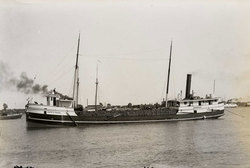
The Venerable Steam Barge Lloyd S. Porter
When launched at Port Huron, Michigan in 1893, the wooden hulled steam barge Lloyd S. Porter was designed to be a bulk cargo carrier and nothing more. At 159 feet in length, the Porter was one of a fleet of carriers operating on the Great Lakes in those years that carried lumber, iron ore, coal and other bulk cargos. Click For Story
When launched at Port Huron, Michigan in 1893, the wooden hulled steam barge Lloyd S. Porter was designed to be a bulk cargo carrier and nothing more. At 159 feet in length, the Porter was one of a fleet of carriers operating on the Great Lakes in those years that carried lumber, iron ore, coal and other bulk cargos. Click For Story
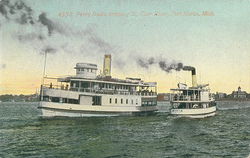
Sinking Of The Grace Dormer
A huge lumber pile at the mouth of the Black River was blamed for a collision that sank the ferry steamer Grace Dormer at Port Huron on July 25, 1883. Capt. Ed Thomas, master of the seventy-six-foot long ferry, was criticized for running his vessel blindly out of the Black River and into the busy St. Clair River without blowing the boat’s whistle. But Thomas also was praised for daring action, which probably saved his passengers from drowning. Click For Story
A huge lumber pile at the mouth of the Black River was blamed for a collision that sank the ferry steamer Grace Dormer at Port Huron on July 25, 1883. Capt. Ed Thomas, master of the seventy-six-foot long ferry, was criticized for running his vessel blindly out of the Black River and into the busy St. Clair River without blowing the boat’s whistle. But Thomas also was praised for daring action, which probably saved his passengers from drowning. Click For Story
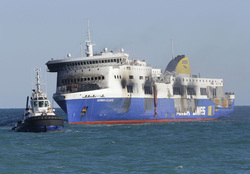
Deadly Norman Atlantic Fire At Sea
The Italian car and passenger ferry Norman Atlantic caught fire and burned during a routine voyage in the Adriatic Sea, from Patras, Greece, to Ancona, Italy, during the early morning hours of December 28, 2014. At least 12 passengers out of an estimated 500 passengers and crew members were believed to have perished. Story
The Italian car and passenger ferry Norman Atlantic caught fire and burned during a routine voyage in the Adriatic Sea, from Patras, Greece, to Ancona, Italy, during the early morning hours of December 28, 2014. At least 12 passengers out of an estimated 500 passengers and crew members were believed to have perished. Story
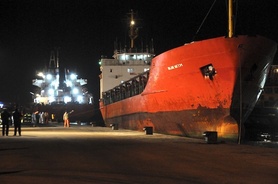
Refugee Ship Blue Sky M
On December 30, 2014, the Greek Coast Guard was alerted to the possibility that a ship off the Mediterranean Island of Othonoi was carrying "illegal immigrants" after authorities received a strange cell-phone emergency call from an unknown person. Before the Coast Guard could dispatch assistance a person claiming to be the ship’s captain reported that it was a false alarm. He said the ship was in no danger and not requesting assistance. At that time the vessel changed course and steamed toward southern Italy without a crew. That ship was the cargo carrier Blue Sky M. Click For More
On December 30, 2014, the Greek Coast Guard was alerted to the possibility that a ship off the Mediterranean Island of Othonoi was carrying "illegal immigrants" after authorities received a strange cell-phone emergency call from an unknown person. Before the Coast Guard could dispatch assistance a person claiming to be the ship’s captain reported that it was a false alarm. He said the ship was in no danger and not requesting assistance. At that time the vessel changed course and steamed toward southern Italy without a crew. That ship was the cargo carrier Blue Sky M. Click For More
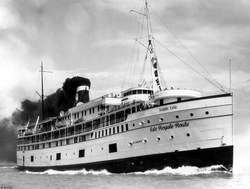
Great Lakes Steamers Named Alabama
Long before the U. S. Navy began naming warships after the State of Alabama, at least two popular steamers sailed the Great Lakes under that same name. Both enjoyed relatively successful careers as passenger and freight carriers. The first Alabama on record was a 234-foot wooden side-wheel steamer launched at Detroit in 1848. The second Alabama was launched for the Goodrich Transit Co. of Chicago in 1909. It was a propeller driven ship with a steel hull. Click For Story
Long before the U. S. Navy began naming warships after the State of Alabama, at least two popular steamers sailed the Great Lakes under that same name. Both enjoyed relatively successful careers as passenger and freight carriers. The first Alabama on record was a 234-foot wooden side-wheel steamer launched at Detroit in 1848. The second Alabama was launched for the Goodrich Transit Co. of Chicago in 1909. It was a propeller driven ship with a steel hull. Click For Story
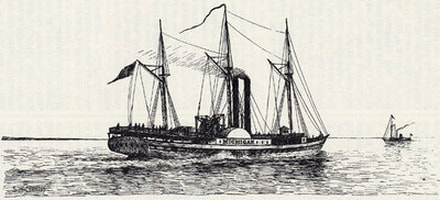
Nineteenth Century Steamship Michigan
The first real steamship built at Detroit in 1847 was the Michigan, a 156-foot-long vessel propelled by duel engines working wheels on both sides. It was an early design for steamships, and the fact that the two wheels were powered by separate engines sometimes created problems. While the arrangement worked well in calm weather, when the vessel was rolling in high seas and stormy weather, the raising of one wheel out of the water while the other was laboring in deep water caused the boat to lurch and jerk from side-to-side. Passengers and crew members had to hang on for dear life. More . . .
The first real steamship built at Detroit in 1847 was the Michigan, a 156-foot-long vessel propelled by duel engines working wheels on both sides. It was an early design for steamships, and the fact that the two wheels were powered by separate engines sometimes created problems. While the arrangement worked well in calm weather, when the vessel was rolling in high seas and stormy weather, the raising of one wheel out of the water while the other was laboring in deep water caused the boat to lurch and jerk from side-to-side. Passengers and crew members had to hang on for dear life. More . . .
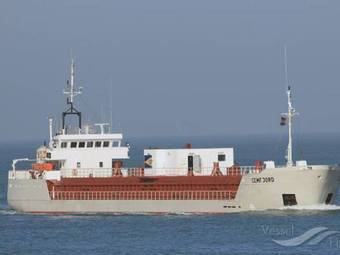
What Caused The Cemfjord To Capsize?
Gale force winds were forecast on the morning of January 2, 2015, when the 273-foot cargo carrier Cemfjord turned turtle on the open seas and sank off North Scotland. The disaster happened so fast and so unexpectedly that the ship never got off a radio distress call and none of the eight crew members had a chance to escape. The puzzle about the Cemfjord is that it was laden with 2,000 tons of concrete and consequently riding low in the water with a lot of ballast when it encountered the storm. Click For More
Gale force winds were forecast on the morning of January 2, 2015, when the 273-foot cargo carrier Cemfjord turned turtle on the open seas and sank off North Scotland. The disaster happened so fast and so unexpectedly that the ship never got off a radio distress call and none of the eight crew members had a chance to escape. The puzzle about the Cemfjord is that it was laden with 2,000 tons of concrete and consequently riding low in the water with a lot of ballast when it encountered the storm. Click For More
The Infamous Fate Of Costa Concordia
The Costa Concordia became an infamous wreck off the Italian coast of Isola del Giglio after its master foolishly drove it on the rocks on January 13, 2012. Salvagers only this year managed to turn the 952-foot-long monster upright, get it riding on massive sponsons, and pull it away to be cut up for scrap. There were about 4200 passengers and crew on the seven-year-old cruise ship when it wrecked. Thirty-two people perished as the ship turned on its side and sank in shallow water. Click For Story
The Costa Concordia became an infamous wreck off the Italian coast of Isola del Giglio after its master foolishly drove it on the rocks on January 13, 2012. Salvagers only this year managed to turn the 952-foot-long monster upright, get it riding on massive sponsons, and pull it away to be cut up for scrap. There were about 4200 passengers and crew on the seven-year-old cruise ship when it wrecked. Thirty-two people perished as the ship turned on its side and sank in shallow water. Click For Story
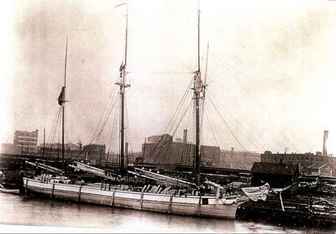
Tragic Capsizing Of The H. Rand
The 107-foot schooner H. Rand capsized in a gale in Lake Michigan, off Port Washington, Wisconsin, on May 24, 1901, killing the crew of four. Experienced sailors said they had warned the boat’s master, Captain Ralph Jefferson, that his habit of sailing with a short crew was setting the stage for disaster. They said a small crew was unable to handle a three-mast sailing ship like the Rand in a storm. They appear to have been right. Click For Story
The 107-foot schooner H. Rand capsized in a gale in Lake Michigan, off Port Washington, Wisconsin, on May 24, 1901, killing the crew of four. Experienced sailors said they had warned the boat’s master, Captain Ralph Jefferson, that his habit of sailing with a short crew was setting the stage for disaster. They said a small crew was unable to handle a three-mast sailing ship like the Rand in a storm. They appear to have been right. Click For Story
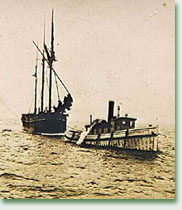
The Sinking Of The St. Peter
Captain John Griffin was the sole survivor after his ship, the three-mast schooner St. Peter foundered in a Lake Ontario storm on October 27, 1898. Griffin’s wife and the ship’s crew of eight others were lost with the schooner. The 135-foot vessel was sailing from Oswego, New York to Toledo, Ohio with 700 tons of coal when it encountered a fierce early winter blizzard as it was approaching the Welland Canal. Click For Story
Captain John Griffin was the sole survivor after his ship, the three-mast schooner St. Peter foundered in a Lake Ontario storm on October 27, 1898. Griffin’s wife and the ship’s crew of eight others were lost with the schooner. The 135-foot vessel was sailing from Oswego, New York to Toledo, Ohio with 700 tons of coal when it encountered a fierce early winter blizzard as it was approaching the Welland Canal. Click For Story
First Iron Steamship Built In France
When French ironmonger Charles Napier and his son, Charles, ordered construction of the first iron hulled steamship at Staffordshire, England, in 1821, people thought they were crazy. In fact, the general opinion was that such a vessel could sink the moment it was launched. Nevertheless, the vessel was fabricated at the Horseley Ironworks, owned by Aaron Manby, and then assembled at Rotherhithe on the Thames River. Contrary to the prevailing wisdom of the day, the flat-bottomed, 120-foot iron-hulled vessel not only floated, but it drew about a foot less water than the wooden steamboats anchored around it. The Napiers named the strange new steamship, with its massive side wheels and tall smoke stack, the Aaron Manby. Thus the Manby not only had the distinction of being the first iron ship to be built anywhere, it was the first to steam out into open waters of the Atlantic. Click For More
When French ironmonger Charles Napier and his son, Charles, ordered construction of the first iron hulled steamship at Staffordshire, England, in 1821, people thought they were crazy. In fact, the general opinion was that such a vessel could sink the moment it was launched. Nevertheless, the vessel was fabricated at the Horseley Ironworks, owned by Aaron Manby, and then assembled at Rotherhithe on the Thames River. Contrary to the prevailing wisdom of the day, the flat-bottomed, 120-foot iron-hulled vessel not only floated, but it drew about a foot less water than the wooden steamboats anchored around it. The Napiers named the strange new steamship, with its massive side wheels and tall smoke stack, the Aaron Manby. Thus the Manby not only had the distinction of being the first iron ship to be built anywhere, it was the first to steam out into open waters of the Atlantic. Click For More
